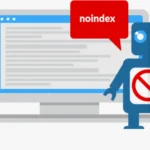Best Practices For Building Backlinks

Best Practices For Building Backlinks for a Powerful SEO
Introduction:
The world of SEO is continually evolving, and at its core, building backlinks remains a pivotal strategy for enhancing website authority and search engine rankings. In this comprehensive guide, we will delve into the best practices of building backlinks, unraveling the intricacies of this art to empower your SEO efforts. From understanding the significance of backlinks to actionable strategies and ethical considerations, this guide is designed to equip you with the knowledge needed to craft a robust and effective backlinking strategy.

1. Understanding the Significance of Backlinks
A. Definition and Importance
Backlinks, also known as inbound links or incoming links, are hyperlinks from one webpage to another. They serve as pathways between websites, allowing users to navigate the vast expanse of the internet. From an SEO perspective, these links are crucial as they not only facilitate user navigation but also significantly influence a website’s search engine rankings.
Backlinks are akin to votes of confidence in the world of search engines. When a website links to another, it signals to search engines that the linked content is valuable, credible, and relevant. Search algorithms interpret this endorsement as a measure of the linked page’s authority and quality. Consequently, websites with a robust backlink profile often enjoy higher visibility in search engine results pages (SERPs). The quantity and, more importantly, the quality of backlinks play a pivotal role in determining a website’s credibility in the eyes of search engines.
Search engines, such as Google, view backlinks as a form of recommendation or endorsement. In essence, if multiple reputable and relevant websites link to a particular page, it is deemed more valuable and deserving of a higher position in search results. The significance of backlinks lies not only in directing traffic but also in establishing a website’s authority, credibility, and relevance within its niche, ultimately contributing to improved search engine rankings and organic visibility. As search algorithms continue to evolve, the strategic acquisition of high-quality backlinks remains a cornerstone of successful SEO practices.

2. The Impact on Search Engine Rankings
The impact of backlinks on search engine rankings is profound and multifaceted. Search engines, such as Google, employ complex algorithms that assess numerous factors to determine the relevance, authority, and overall quality of a website. Backlinks are a pivotal element in this evaluation process.
When a website accumulates high-quality backlinks from authoritative and relevant sources, it sends a strong signal to search engines that the content is trustworthy and valuable. As a result, the search algorithm is more likely to rank that particular page higher in search results for relevant queries. Essentially, backlinks act as a vote of confidence and credibility, influencing the perceived authority of a webpage.
Moreover, backlinks contribute to the overall link graph of the web, creating a network of interconnected pages. Pages with a robust network of backlinks are seen as more integral and essential within their niche or industry. The quantity and quality of backlinks directly impact a website’s PageRank, a numerical representation of its authority in the eyes of search engines. Websites with higher PageRank are generally positioned more prominently in search results, leading to increased visibility and, consequently, more organic traffic.

3. Types of Backlinks
a) Natural backlinks, also known as editorial or earned links, are links that are acquired organically without any direct effort from the website owner or marketer. These links are a result of other websites finding the content valuable and choosing to link to it naturally. Natural backlinks typically arise when the content is compelling, informative, or entertaining, making it share-worthy within the online community.
How Natural Backlinks Are Earned?
Earning natural backlinks involves a focus on creating high-quality, relevant, and authoritative content that resonates with the target audience. When content provides genuine value, other websites, blogs, or online publications may link to it as a reference, citation, or additional resource. This organic linking is often a testament to the content’s credibility and usefulness in the online ecosystem.
Advantages of Natural Backlinks
The primary advantage of natural backlinks lies in their authenticity and credibility. Search engines, particularly Google, highly value natural backlinks as they are seen as unbiased indicators of a website’s authority. Natural backlinks are more likely to come from reputable sources within the industry or niche, reinforcing the website’s standing in the online community. Moreover, since they are not manipulated or solicited, natural backlinks are less likely to be viewed as spammy by search engines, contributing positively to a website’s overall link profile and SEO health.
b)Manual Outreach Backlinks, also known as acquired or outreach links, involves a proactive approach where website owners or marketers reach out to other websites, influencers, or industry authorities to request a link. This method requires personalized communication and relationship-building to secure backlinks from relevant and authoritative sources. The goal is to establish mutually beneficial connections and convince others of the value your content brings to their audience.
Key Steps in Manual Outreach:
- identifying Prospective Targets: Begin by identifying websites, blogs, or influencers in your industry or niche that align with your content and audience.
- Crafting Personalized Pitches: Create personalized and compelling pitches that highlight the value your content provides and why it’s beneficial for their audience.
- Building Relationships: Establish genuine relationships with target websites by engaging with their content, sharing insights, or participating in discussions.
- Follow-Up and Persistence: Outreach often requires multiple touchpoints. Follow up on initial pitches, be persistent without being intrusive, and adapt your approach based on feedback.
Advantages and Challenges:
Manual outreach backlinks offer the advantage of control and strategic targeting. By actively seeking links from specific, relevant sources, you can tailor your backlink profile to align with your SEO goals. These links are often placed within context, adding value to both the linking and linked-to websites. However, manual outreach comes with challenges, including rejection, time-intensive efforts, and the need for effective communication skills. Success in manual outreach requires a balance of persistence, personalized communication, and a commitment to providing value to potential linking partners. When executed effectively, manual outreach can contribute significantly to a diverse and high-quality backlink profile.

4. Best Practices for Building Backlinks
(i) Create High-Quality, Shareable Content
Creating high-quality, shareable content is the cornerstone of any successful backlink strategy. High-quality content is not only informative and well-researched but also addresses the needs and interests of your target audience. It should be unique, and engaging, and offer a fresh perspective or valuable insights. Consider various content formats, such as blog posts, infographics, videos, or interactive tools, to cater to diverse preferences.
b) Key Characteristics of Shareable Content:
- Relevance and Timeliness: Shareable content often aligns with current trends, industry news, or timely topics that resonate with your audience.
- Visual Appeal: Incorporate visually appealing elements, such as compelling images, graphics, or videos, to enhance shareability.
- Ease of Consumption: Content that is easy to read, understand, and share is more likely to be shared across social media platforms and other online channels.
- Actionable Insights: Provide actionable insights or practical takeaways that compel readers to share your content as a valuable resource.
- Originality and Uniqueness: Unique perspectives, research findings, or creative approaches contribute to the shareability of content.
c) Encouraging Social Sharing and Backlinks:
- Incorporate Social Sharing Buttons: Make it easy for readers to share your content by including social sharing buttons prominently within your content.
- Engage on Social Media: Actively promote your content on social media platforms, engaging with your audience and encouraging them to share.
- Collaborate with Influencers: Partner with influencers in your industry to extend the reach of your content and encourage their followers to share.
d) Measuring Success and Iterating:
Utilize analytics tools to track the performance of your content. Monitor social shares, backlinks, and overall engagement metrics. Analyze which types of content resonate most with your audience and refine your future content strategy accordingly. Regularly update and repurpose successful content to keep it relevant and continue attracting backlinks over time.
(ii) Conduct Competitor Backlink Analysis
a) Key Steps in Competitor Backlink Analysis:
1. Identify Competitors: Compile a list of competitors within your industry or niche. These are websites that target a similar audience or offer similar products/services.
2. Use Backlink Analysis Tools: Leverage backlink analysis tools like Ahrefs, SEMrush, or Moz to gather comprehensive data on your competitors’ backlink profiles. Look for both the quantity and quality of their backlinks.
3. Analyze Linking Domains: Assess the domains that link to your competitors. Identify authoritative websites, industry publications, or influencers that are relevant to your business.
4. Explore Linking Anchor Texts: Examine the anchor texts used in backlinks. This provides insights into the keywords and phrases associated with your competitors’ link-building efforts.
5. Evaluate Link Diversity: Assess the diversity of link types, such as guest posts, social media mentions, or directory listings. Understanding the variety of backlink sources can inform your own strategy.
b) Utilizing Insights for Your Strategy:
1. Identify Gaps and Opportunities: Identify areas where your competitors have strong backlinks and determine if there are untapped opportunities or gaps in your strategy.
2. Emulate Successful Tactics: If certain strategies are proving successful for your competitors, consider incorporating similar tactics into your own backlink-building efforts.
3. Build Relationships with Common Link Sources: Engage with websites that frequently link to your competitors. Establish relationships by offering valuable content, insights, or collaboration opportunities.
4. Monitor Competitor Changes: Regularly update your competitor backlink analysis to stay informed about changes in their strategy. New backlinks or shifts in their approach can guide adjustments to your own strategy.
Competitor backlink analysis is an ongoing process that provides a dynamic blueprint for refining and optimizing your own backlink-building efforts. By learning from your competitors, you can stay competitive and strategically enhance your website’s authority and visibility.
(iii) Leverage Guest Blogging
Guest blogging is a strategic approach to building backlinks by contributing content to other websites within your industry or niche. This collaborative effort allows you to showcase your expertise, reach a new audience, and earn high-quality backlinks to your website. The symbiotic nature of guest blogging benefits both parties—the host website gains valuable content, and you gain exposure and backlinks.
a) Key Steps in Leveraging Guest Blogging:
1. Identify Target Websites: Research and identify websites that align with your industry and target audience. Look for reputable blogs, online publications, or platforms that accept guest contributions.
2. Understand Guest Posting Guidelines: Before reaching out, thoroughly understand the guest posting guidelines of the target websites. Guidelines often include content quality standards, preferred topics, and submission processes.
3. Craft Compelling Pitches: Develop personalized and compelling pitches that demonstrate your expertise and propose topics that align with the host website’s audience. Tailor your pitches to showcase the unique value you bring.
4. Create High-Quality Content: Once your pitch is accepted, create a well-researched, engaging, and original piece of content. Ensure that the content adds value to the host website’s audience.
5. Incorporate Author Bio and Backlinks: Include a concise author bio that highlights your expertise and includes a link back to your website. Additionally, strategically place relevant backlinks within the content where they add value.
b) Benefits and Best Practices:
1. Builds Authority and Credibility: Guest blogging establishes you as an authoritative voice within your industry, enhancing your online credibility.
2. Expands Reach and Audience: By contributing to other platforms, you tap into a new audience, potentially increasing your reach and attracting a diverse set of readers.
3. Diversify Backlink Profile: Guest blogging provides an opportunity to secure diverse backlinks from reputable sources, contributing to a well-rounded backlink profile.
4. Fosters Relationships: Building relationships with editors, website owners, and other contributors can lead to future guest posting opportunities and collaborations.
5. Adheres to Ethical SEO Practices: When done ethically and with a focus on providing value, guest blogging aligns with SEO best practices and contributes positively to your website’s link-building strategy.
Leveraging guest blogging as part of your backlink-building strategy requires a strategic and thoughtful approach, emphasizing quality content, relevance, and mutual benefit for both you and the hosting websites.
(iv) Foster Relationships with Influencers
Building relationships with influencers in your industry is a strategic approach to gaining backlinks and enhancing your online presence. Influencers, with their established credibility and substantial following, can provide valuable opportunities for collaboration that go beyond traditional link-building methods.
a) Key Steps in Fostering Influencer Relationships:
1. Identify Relevant Influencers: Research and identify influencers within your niche or industry whose audience aligns with your target demographic. Consider their reach, engagement, and authenticity.
2. Engage Authentically: Begin engaging with influencers authentically on social media platforms by commenting on their content, sharing their posts, and expressing genuine appreciation for their work.
3. Offer Value: Provide value to influencers by sharing your expertise, insights, or resources that align with their content and audience. This establishes you as a valuable contributor to their community.
4. Collaborate on Content: Propose collaborations, such as co-authored blog posts, interviews, or joint webinars. These collaborations can naturally lead to backlinks within the content.
5. Attend Industry Events: Participate in industry events, conferences, or online forums where influencers are active. Personal interactions at such events can strengthen relationships.
b) Benefits and Best Practices:
1. Authenticity Builds Trust: Genuine engagement fosters trust with influencers, making them more receptive to collaboration and backlink opportunities.
2. Access to Targeted Audiences: Influencers have dedicated and engaged audiences. Collaborating with them allows you to tap into these audiences, increasing the visibility of your content.
3. Diversify Content Distribution: Influencers can share your content with their followers, broadening their reach and potentially earning backlinks as influencers reference or share your work.
4. Long-Term Partnerships: Focus on building long-term relationships rather than one-off collaborations. Consistent engagement can lead to ongoing backlink opportunities.
5. Respect Influencers’ Preferences: Be mindful of influencers’ preferences and priorities. Some may prefer specific collaboration methods, while others may have guidelines for sharing content.
Fostering relationships with influencers is not solely about acquiring backlinks; it’s about genuine engagement and collaboration. When approached authentically, influencer relationships can become valuable assets in your backlink-building strategy, providing sustained benefits for both parties involved.

5. Ethical Considerations in Backlink Building
(i) Avoid Black-Hat Techniques:
Black-hat techniques in backlink building refer to manipulative and unethical practices aimed at artificially boosting a website’s search engine rankings. These practices violate search engine guidelines and can lead to severe penalties, including the loss of organic visibility or even exclusion from search engine results.
a) Common Black-Hat Techniques:
1. Buying Links: Purchasing backlinks from unscrupulous sources to artificially inflate link metrics.
2. Link Farms: Joining or creating networks of websites solely to exchange backlinks, often with low-quality content.
3. Keyword Stuffing: Overloading content with irrelevant or excessive keywords to manipulate search engine algorithms.
4. Cloaking: Presenting different content to search engines and users to deceive search algorithms.
5. Private Blog Networks (PBNs): Creating networks of interconnected blogs with the primary intent of manipulating search rankings through artificial linking.
b) Risks and Consequences:
Engaging in black-hat techniques poses significant risks to a website’s long-term viability. Search engines, particularly Google, continually refine their algorithms to detect and penalize such practices. Penalties may include a drop in search rankings, removal of the website from search results, or even a complete ban from the search engine index.
(ii)Prioritize Relevance and Authority:
a)The Significance of Relevance :
Prioritizing relevance in backlink building is akin to ensuring that the connections your website forms are meaningful and contextually aligned with your content. Search engines, particularly Google, highly value relevance as it indicates that the linked content is in harmony with the overarching theme of your website. When backlinks come from sources that share a thematic relevance, it strengthens the overall message your website conveys to both users and search engines. This alignment contributes to a more cohesive online presence, making it easier for search algorithms to understand the context and purpose of your content.
b)Enhancing User Experience :
Relevance in backlink building goes beyond search engine algorithms; it significantly impacts the user experience. Users clicking on a link expect the linked content to be complementary and valuable in the context of their initial interest. When backlinks lead to relevant content, it enhances user satisfaction, engagement, and trust. Users are more likely to navigate through a series of linked pages when each link offers continuity and relevance, leading to lower bounce rates and increased time spent on your website. This positive user experience, influenced by relevant backlinks, is a crucial factor in building and retaining an online audience.
Prioritizing relevance and authority in backlink building is a holistic approach that harmonizes the thematic consistency of your website, enhances user experiences, establishes trust signals, and strategically integrates links within meaningful content. This ethical foundation not only aligns with search engine guidelines but also contributes to the long-term success and credibility of your online presence.
Conclusion
In the dynamic landscape of SEO, building backlinks stands out as a fundamental strategy for website success. By understanding the nuances of backlink types, implementing best practices, and adhering to ethical considerations, you can cultivate a powerful backlink profile that elevates your website’s authority and boosts search engine rankings. Armed with this comprehensive guide, you are now equipped to embark on a journey of strategic backlink building, propelling your website to new heights in the digital realm.
Partnered with Naumaan Oman
Recent Posts
Working Together Ideas come to life
No matter how big your company is, as you expand and reach new highs you’ll want an agency to have your back. One with a process
360presence@gmail.com

© 2023 360PRESENCE All rights Reserved

















